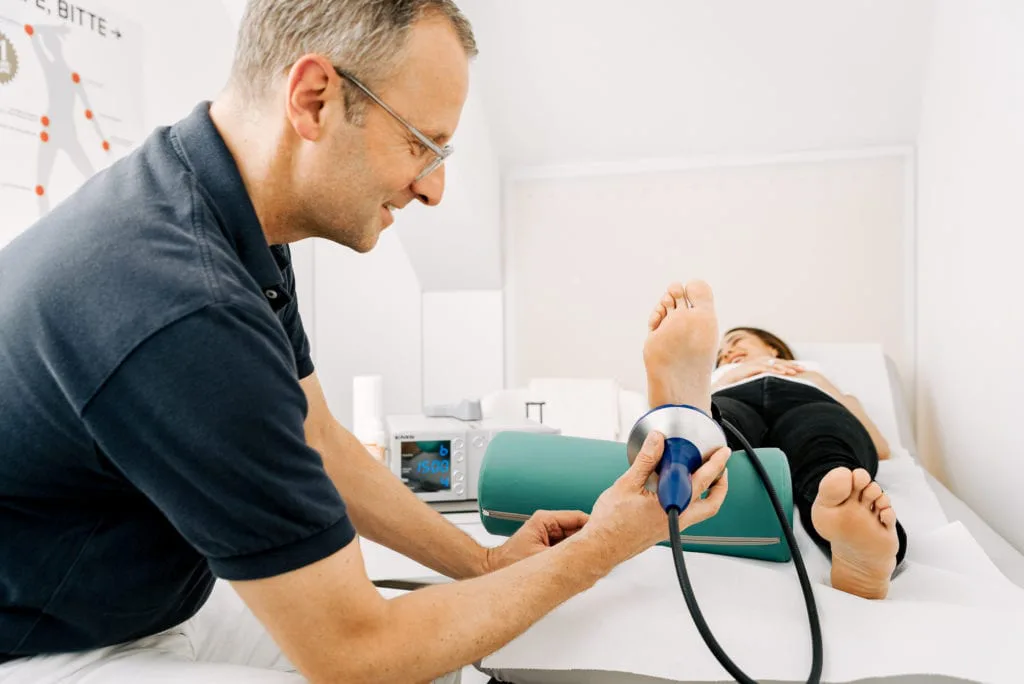Sudden pain in the shoulder can be caused by calcium deposits. Such a calcified shoulder often remains undetected. Shock wave therapy helps to prevent surgery in acute cases.
As if someone were stabbing you in the shoulder with a knife. The symptoms come on gradually, usually at night, and then increase sharply within a very short time. Twisting movements of the arm – e.g. when putting on or taking off a T-shirt or combing hair – become agonizing, almost unbearable. The pain often radiates to the upper arm and elbow. Such symptoms describe the so-called calcified shoulder.
What is a calcified shoulder?
The causes of the development of such calcified shoulders are still unclear. What is clear, however, is that it is extremely painful and also affects younger people. With a calcific shoulder, it is not the shoulder joint itself that becomes diseased. Rather, there are calcium deposits in the surrounding shoulder tendons. 90 percent of these calcium deposits are located in the rotator cuff, preferably in the supraspinatus tendon. Most calcium deposits on the shoulder occur in middle age – i.e. between the ages of 25 and 55. 70 percent of those affected are women and around 30 percent are men. It is not yet known why this is the case.
It is also unclear how spontaneous resorption of the calcium can occur – the reason for the acute and sudden onset of shoulder pain. Resorption describes the dissolution of the calcium deposit in the shoulder. This leads to a local inflammatory reaction in the tunnel under the acromion. The pain is so severe because the inflamed and swollen bursa has no room to expand between the two bones of the humeral head and the bony acromion.
Chronic symptoms can also develop with pain on exertion or at rest with normal mobility of the joint. Although the prognosis is generally good, treatment may be necessary.
What helps?
Shock wave therapy (ESWT) has proven to be effective in avoiding endoscopic removal of calcium deposits, especially in cases of recurring pain. The benefits of this treatment method for improving symptoms and reducing calcium deposits have now been proven in many studies.
In shock wave therapy, the device is applied directly to the calcium focus. Acoustic waves are sent under high pressure as shock waves into the tissue. There, the waves spread to the area of pain. The effect of the waves is to break up the deposits at the boundary layer to the diseased tissue.

Traditional physiotherapy exercises can also be effective. They widen the space under the acromion and thus reduce the pressure on the tendons, which are widened by the calcium.
Do you have any questions about calcified shoulder or shock wave therapy? Feel free to contact us!

